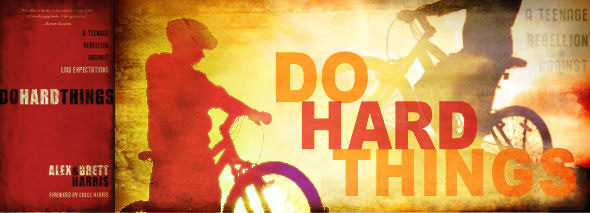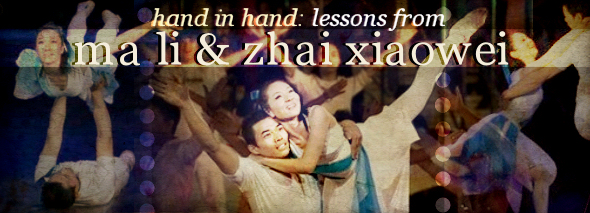What's the goal? Whether or not shock value works depends largely on what you're trying to achieve. Do you want to elicit an emotional response from the viewer and motivate them to take action on a certain issue? In this case, shock value can be very useful. If, on the other hand, you want to prove an opinion, such as, "Animal testing is wrong," shock value will not help you. I once watched a classmate give a presentation on this topic, relying greatly on graphic photos to prove her point. While I agreed that certain forms of testing were cruel, I was left asking myself: what if there was a way to do animal testing painlessly? Would it be wrong then? While shock value can prove that a certain technique for doing something, like abortion, is wrong, it doesn't tackle the heart of the issue. If there was a less-horrific way to perform abortions than to rip the fetus apart, would it still be immoral? Questions like must be answered through reasoning, not with pictures. Times change: two hundred years ago, the death penalty was carried out by beheading; today, it's done by a simple injection -- does its lack of shock-value change whether it is right or wrong? If you want to prove a point, you can't rely on emotions produced by pictures -- they can affect individuals, but they won't tear down counter-arguments. On being sensitive As attention-grabbing as it seems, shock value can sometimes alienate your audience. As a younger teen, I had several opportunities to do school projects on abortion -- an issue that I am very passionate about -- but I avoided the subject because I was afraid of the visuals that I knew I'd encounter in my research. That was purely from squeamishness -- imagine how much less a woman who has had an abortion and goes online seeking hope, wants to see such images. She'll probably avoid searching for the topic altogether! Some online resources, like CARM.com, recognize this: the site's Abortion section (written by a man whose girlfriend underwent the procedure) tells readers, "I cannot and will not pronounce some holy judgment against the "sinners" who have had abortions -- for I am one of them, though graciously and undeservingly forgiven. ... I have little to offer except hope, forgiveness, love, reason, information, and the word of God. So, do not expect gross pictures, or a psychological guilt-whipping. Expect information, care, and concern." A good tip to remember, therefore, is to be sensitive when you use graphic pictures. When you force such images on viewers, you'll probably get a negative reaction; when you invite the viewer to see for themselves, they'll be more open to the message you wish to send. Abort73.com does a good job of this by keeping all graphic photographs to a single subsection of the site and warning viewers when they're about to see them. As a result, people know exactly what they're going to find on the site, and feel more comfortable using it. The Media -- Blessing or Curse? One of shock-value's most exploited characteristics is its ability to capture media attention and generate discussion. On the one hand, this can be very useful -- what better way to get your community concerned about Africa's poverty than to mass-distribute images depicting a world that they might otherwise never see? Consider the famous 1972 photograph of Kim Phuc, which shows a young girl screaming in pain as she runs from the bombs that have fallen on her Vietnam village. Within days, this photograph was in the hands of millions of people, and they started talking, asking questions, and demanding action. Shocking photos quickly make their way into the public eye, which makes them a valuable resource for raising awareness -- fast. On the other hand, however, such widespread, iconic photos lose their shock factor very easily. The first time I saw photographs of emaciated, impoverished African children, I was deeply affected; today, after having seen hundreds, I can pass such a photo almost no reaction. When forgetting poverty is as easy as flipping a magazine page or changing the channel, apathy is born: the more shocking images we see without taking any action, the more used to them we become, and the less compelled we feel to change things. Think of this on a Biblical scale: Jesus' words in Matthew 5:39, "If anyone strikes you ... turn the other cheek," were viewed as absolutely scandalous when he had first uttered them. Today, the phrase has become a figure of speech, used in jokes and pop culture until most of its meaning has worn off. Shock value always runs the risk of being used lightly, which causes people to grow hardened to its message. The ultimate judge If you do decide that you want to include graphic images in a presentation, site, or publication, be prepared for dissidence -- there will always be people who will be displeased with your use of their shock value. Always remember that your ultimate judge is God, and he looks at the heart. So examine your motives for using the shock factor -- is it to convey a message, or to get your site more hits, or to go along with what everyone else is doing? Do you want to create discussion and provoke thought, or to stir up controversy? When you're asking yourself, "To shock, or not to shock?" let God be the final authority.
Shock works. When things are, as they say, "out of sight," we tend to put them "out of mind," and sometimes, shocking photographs can be very useful in jolting us out of our apathy. Graphic images of things such as war, hunger, and abortion have an immediate effect on viewers: they force us out of the comforts of our ignorance; show us the face of abstract concepts like "violence," "poverty," and "cruelty;" and, ultimately, leave us with an important decision to make: what am I going to do about this? Perhaps that's why there's so much controversy over the ethics of shock value in photography -- it leaves people so uncomfortable that, to some, it just seems wrong. But are pictures like these always exploitative? When, and how, should the shock-factor be used? If you've ever designed a website, written a pamphlet, or done a presentation on a weighty issue, you might have asked yourself such questions. While there's no clear-cut answer, here are a few important things for creative, globally-conscious youth to keep in mind. Article by Oksana K.
Article by Oksana K.
Image credits: Image of African children found here; image of Kim Phuc by Nick Ut.
Some Topics for Discussion: (Feel free to discuss other things related to this article!)
1) Have you ever been moved by a shocking photograph? Tell us about your experience.
2) How do you feel about using shock value to get a message across?
3) Do you have any tips to add to those listed above on making shock value less exploitative and more ethical?
Leave a comment with your thoughts...
[8.4.09
|
0
comments
]
















0 comments
Post a Comment